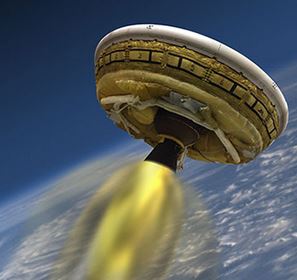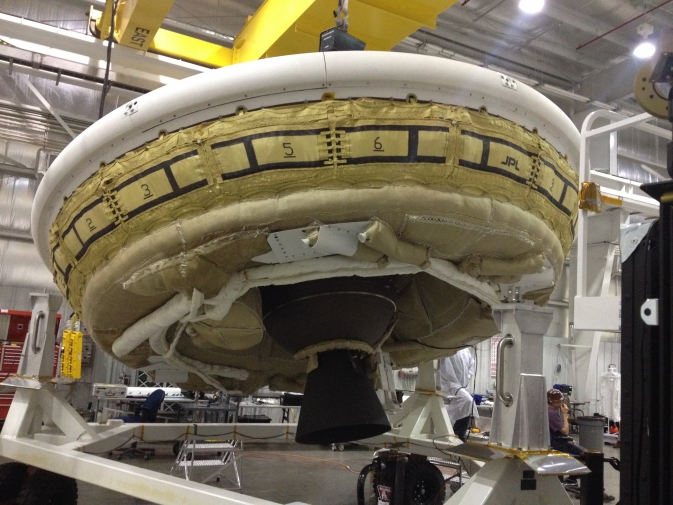

NASA’s flying saucer preparing for a supersonic test.
NASA’s Jet Propulsion Laboratory (JPL) is a research and development center located in the foothills of the Angeles National Forest. Their mission is simple: Figure out how to construct and operate spacecraft that can fly safely in outer space. By dedicating their work to Teddy Roosevelt’s mantra of “dare mighty things”, JPL has managed to visit every planet in our solar system.
In recent years, the JPL has been adamantly trying to find ways for humans to one day visit Mars. For centuries, people have wondered if life on Mars is possible due to its close proximity and similarity to Earth. And, as recent evidence suggests, there was a time when Mars provided a fertile habitat for bacterial life.
Theoretically, the possibility of humans living on Mars is not as far-fetched as some people may think. While both planets are different when it comes to temperature, size, and atmosphere; the geologic processes of the two planets are nearly identical. The same volcanoes, canyons, and impact basins we have on Earth are also visible on Mars. But how do we get there safely?
The current technology that’s being used for decelerating into Mars dates back to NASA’s Viking Program, which safely put two landers on the red planet in 1976. But, in order to conduct advanced exploration missions in the future to land heavier, human-occupied spacecraft on mars, NASA needs to advance this technology to safely decelerate large payloads travelling at supersonic speeds. The JPL’s solution to this problem is a spacecraft they’re calling a Low Density Supersonic Decelerator (LDSD).
Measuring a whopping 963,000 cubic meters, the first launch will take place sometime this month (possibly Saturday June, 14) from the U.S. Navy’s Pacific Missile Range Facility in Kauai, Hawaii. If everything goes according to plan, a fraction of a second after dropping the balloon, and a few feet below it, four small rocket motors will fire to spin up and gyroscopically stabilize the saucer. Then, a half second later, a Star 48B long-nozzle, solid-fueled rocket engine will kick in with 17,500 pounds of thrust, sending the test vehicle to the edge of the stratosphere.
“After years of imagination, engineering, and hard work; we soon will get to see our Keiki o ka honua, our ‘boy from Earth,’ show us its stuff. The success of this experimental test flight will be measured by the success of the test vehicle to launch and fly its flight profile as advertised. If our flying saucer hits its speed and altitude targets, it will be a great day.”
–Mark Adler, Project Manager for the LDSD
If you want to watch NASA’s first flying saucer in action, you can tune in to a livestream that will include selected portions of the test, including the rocket-powered ascent. And, if you like what you see, maybe one day you’ll be onboard of one if you decide to visit (or even live) on Mars. If you don’t think this will happen in your lifetime, think again. Depending on the LDSD’s success, human-occupied spacecraft missions to Mars could be launching as soon as 2020.

